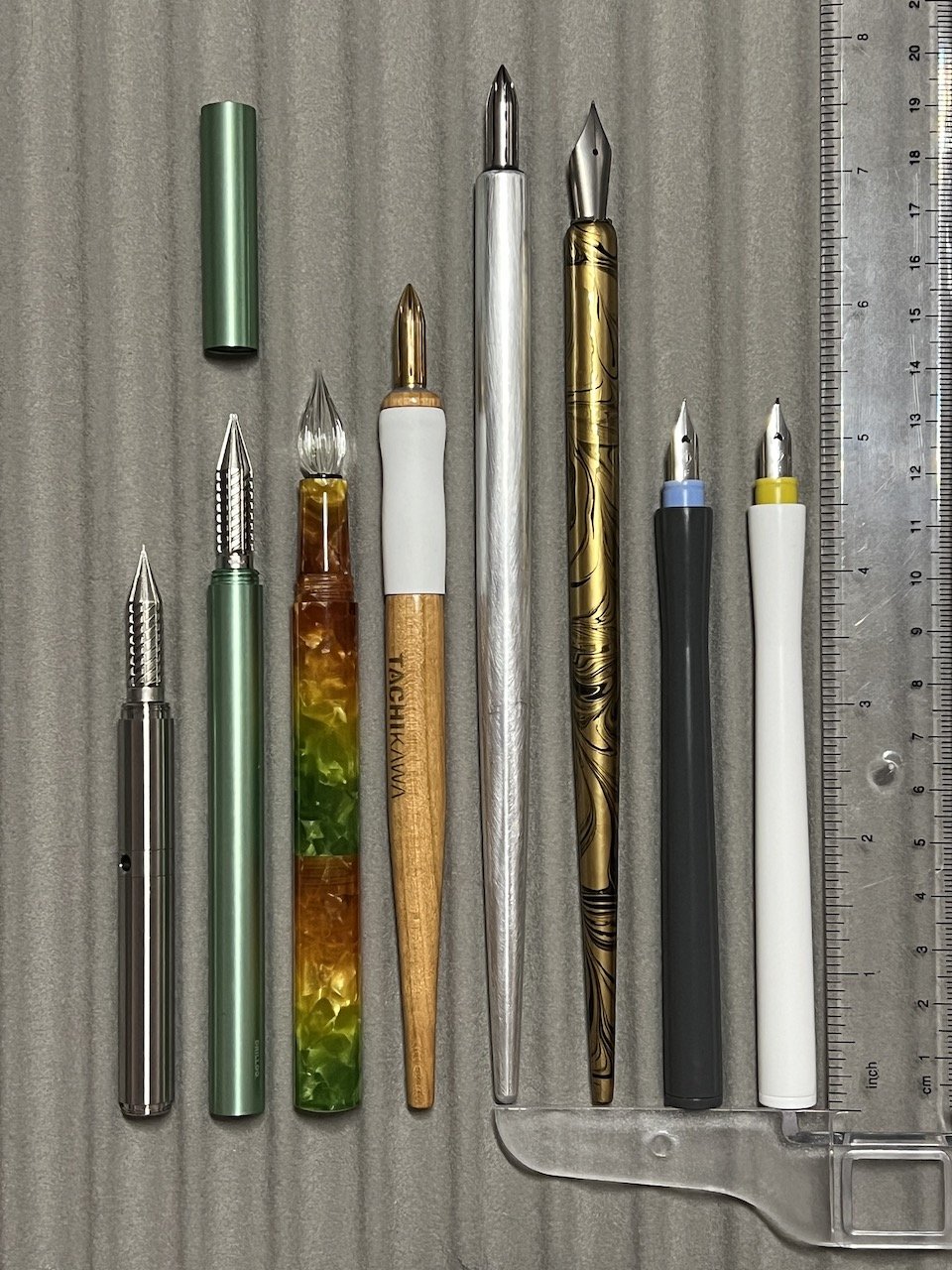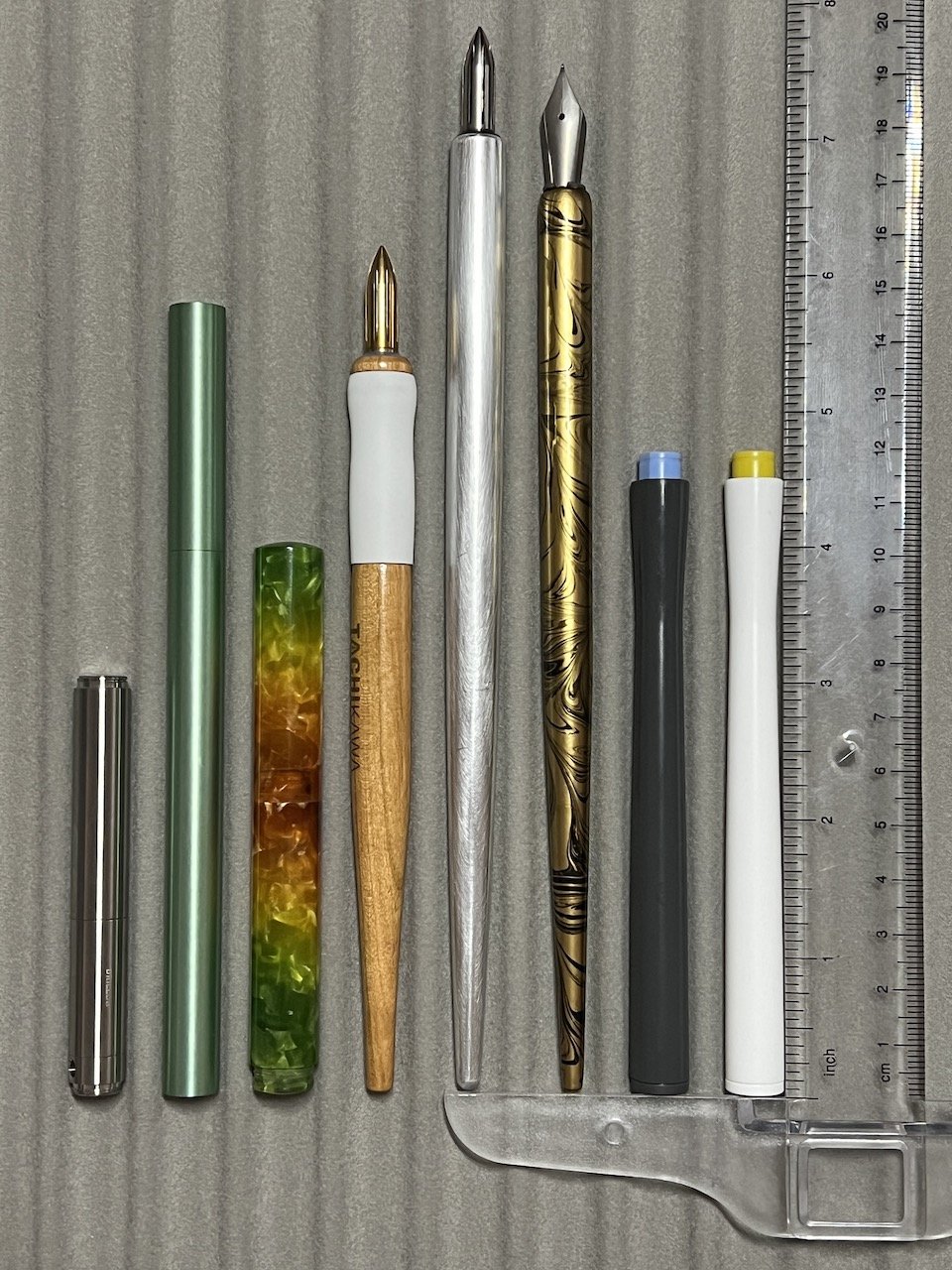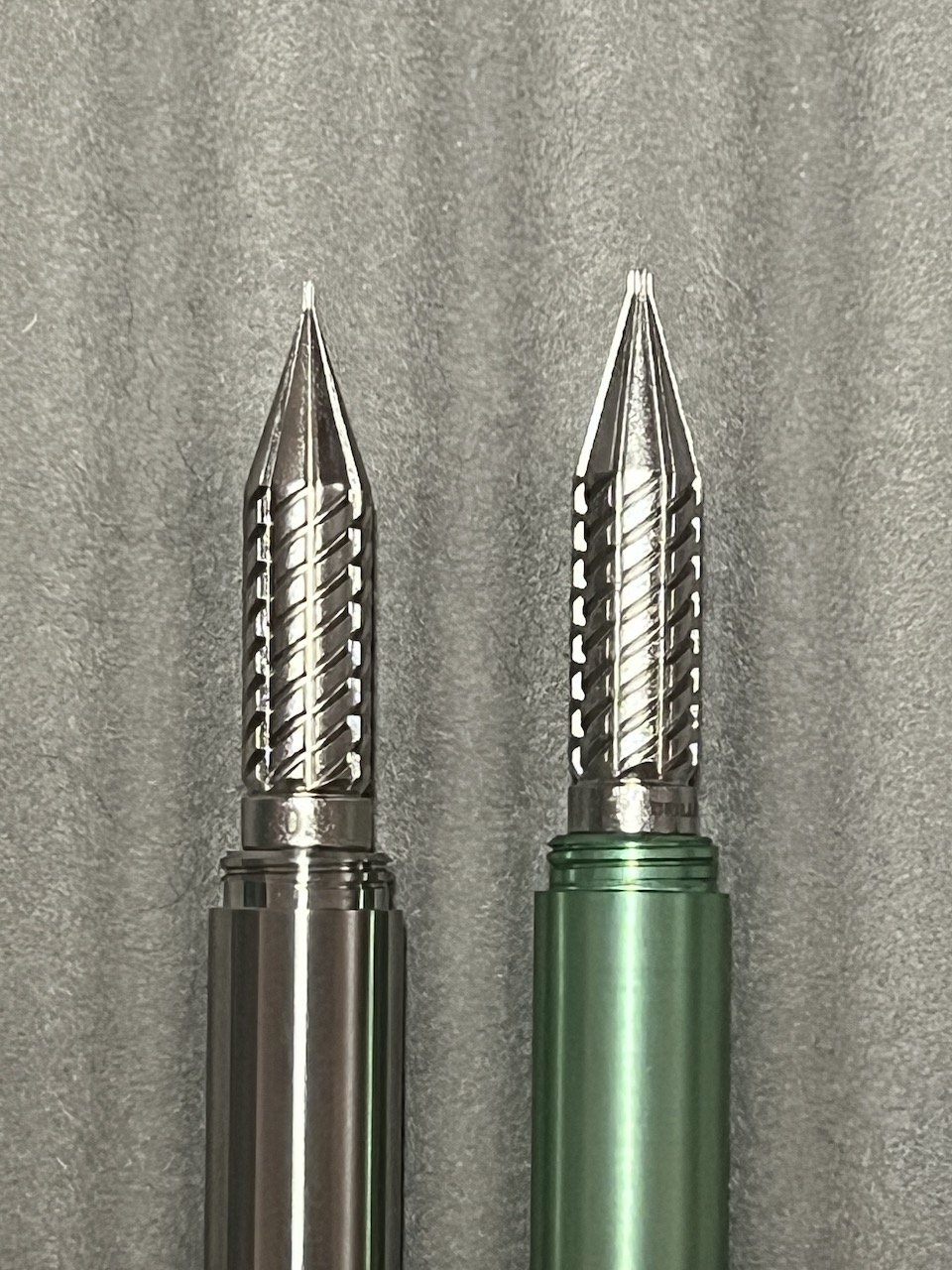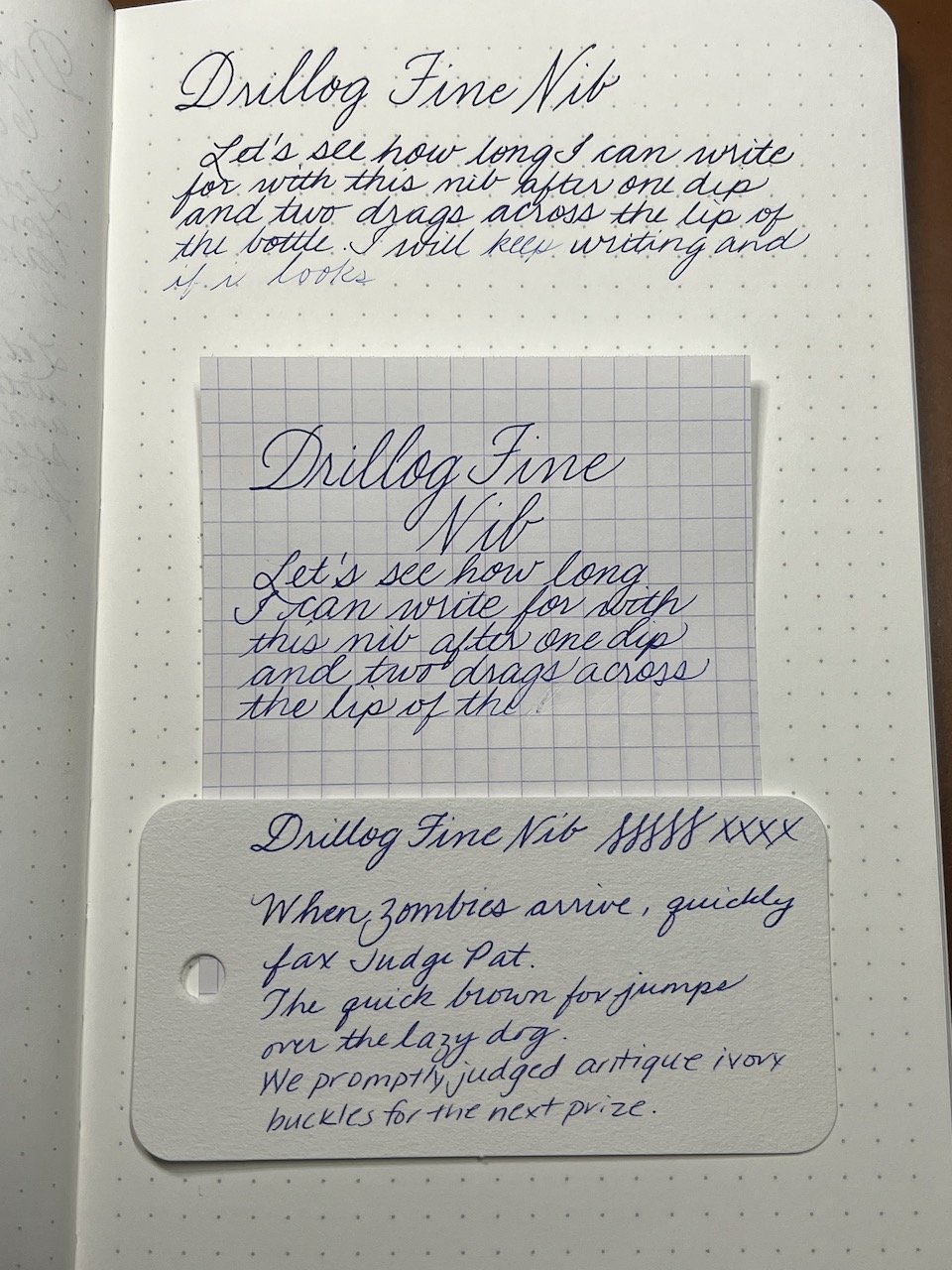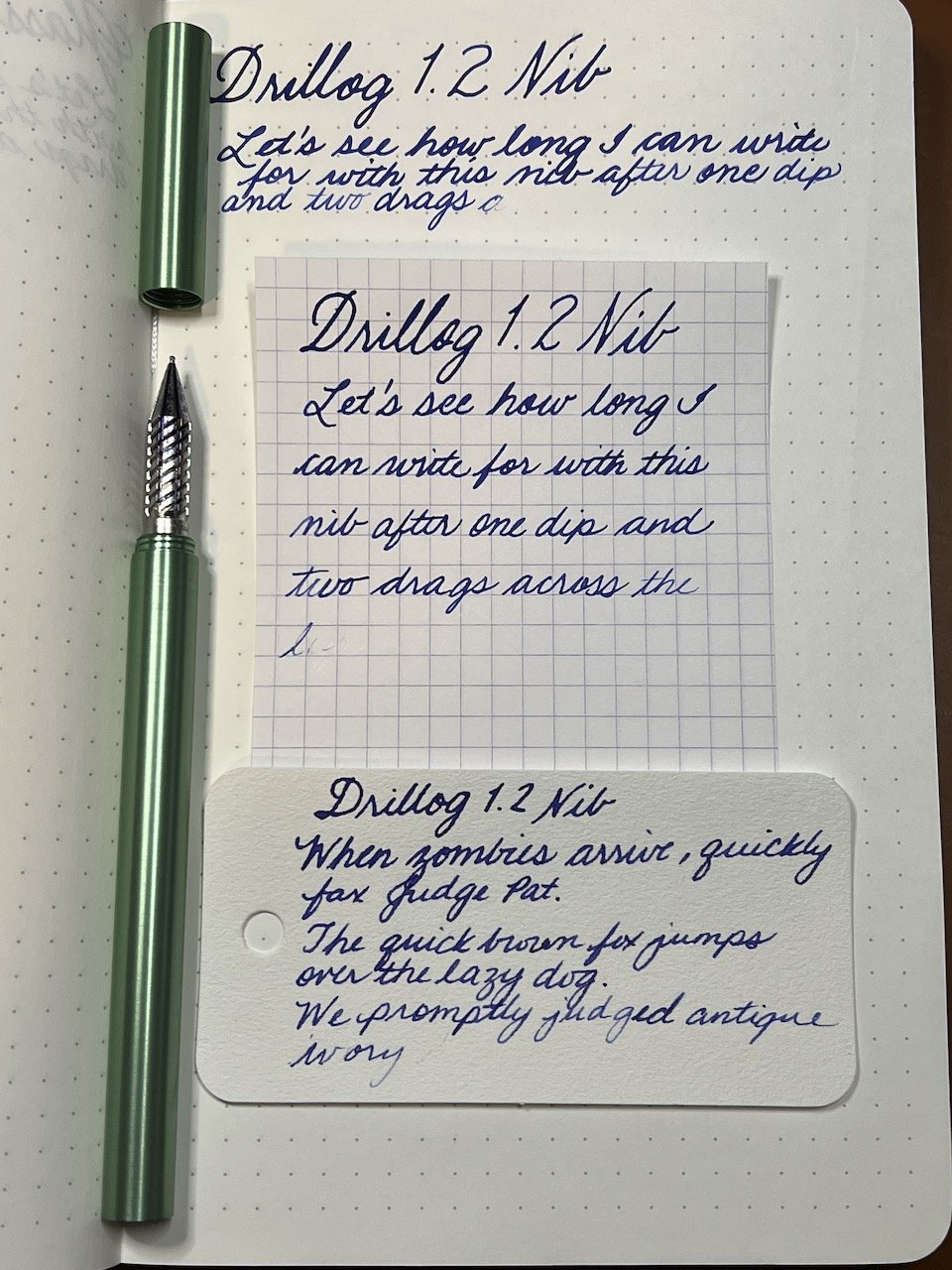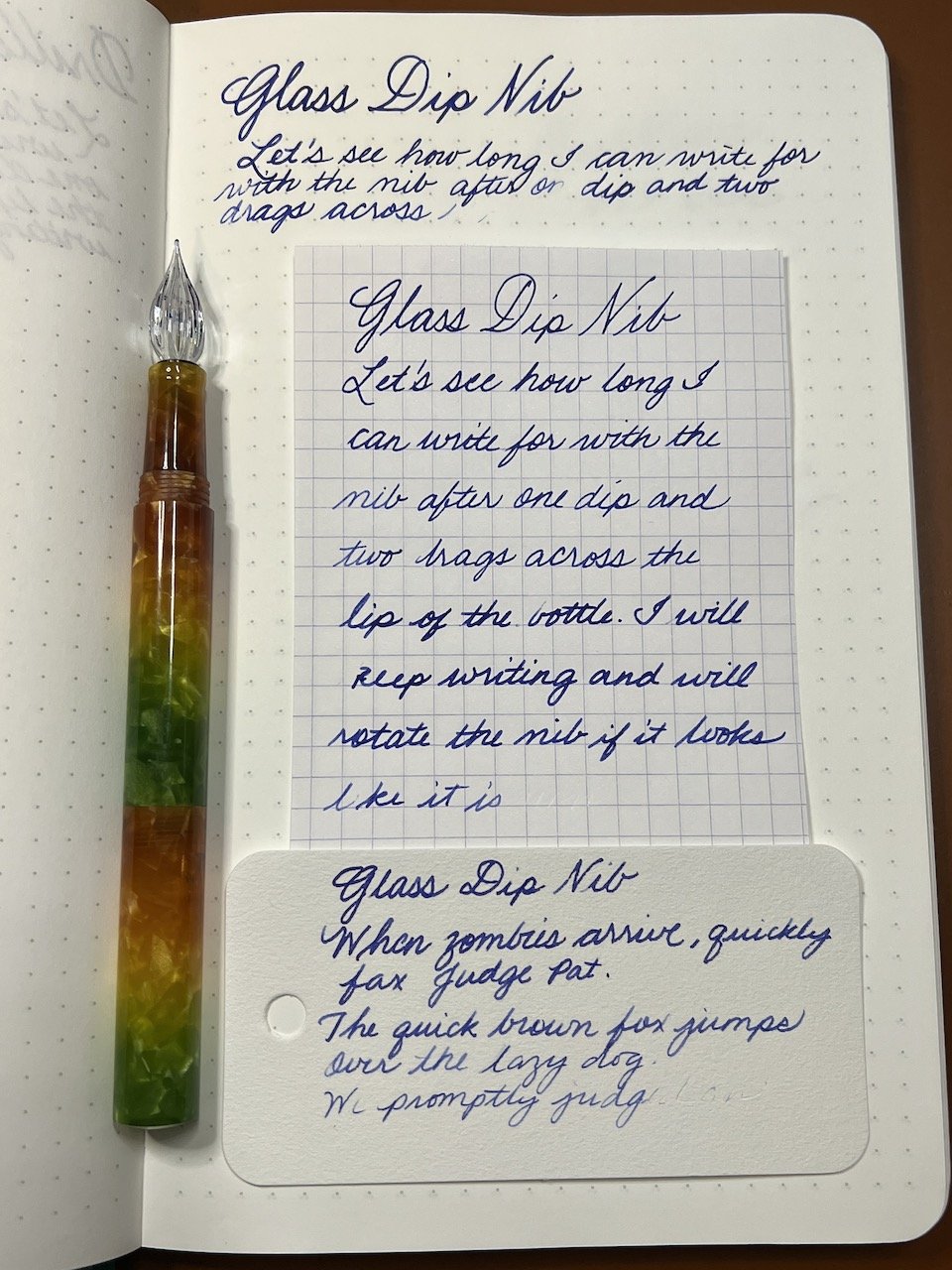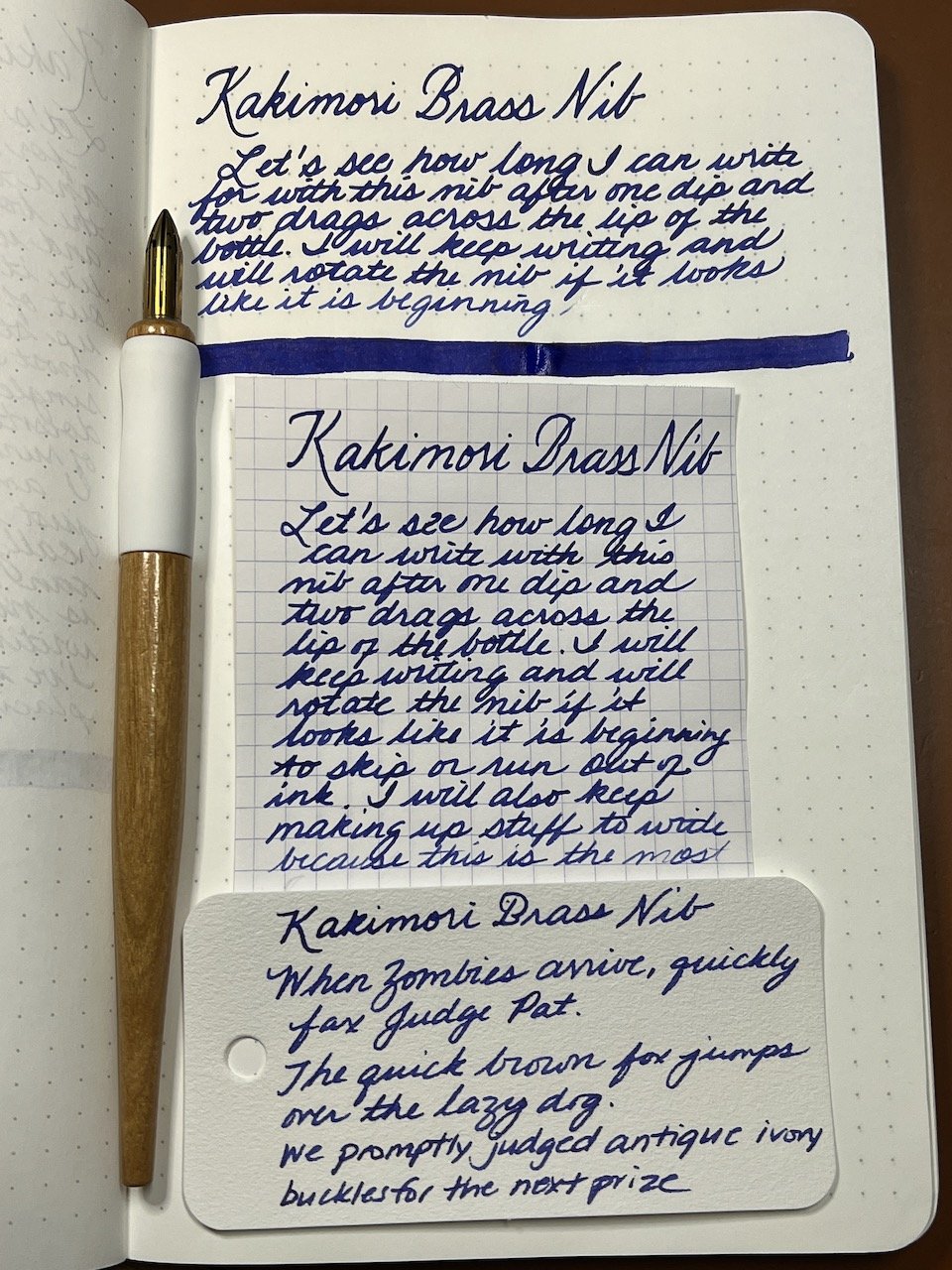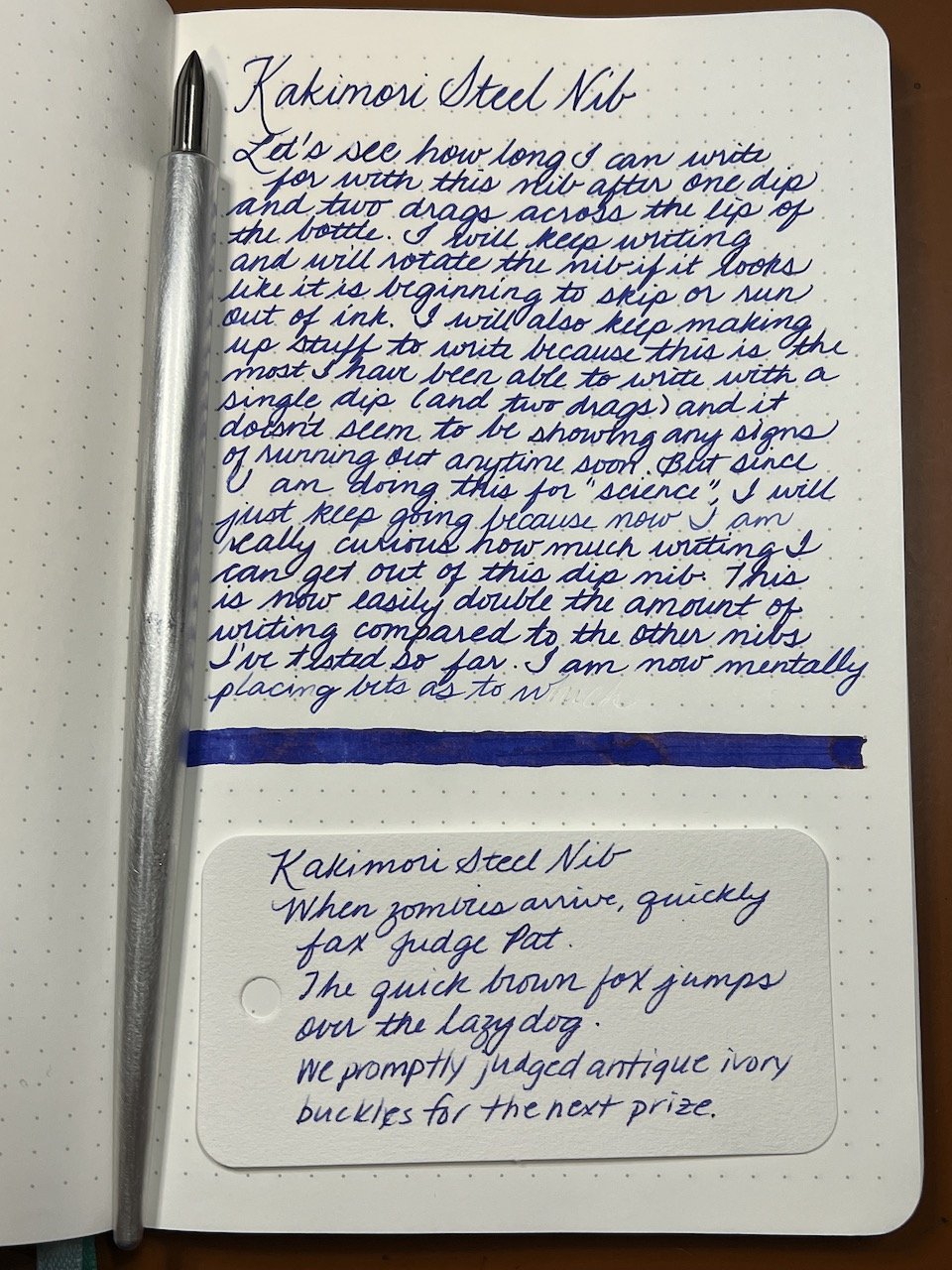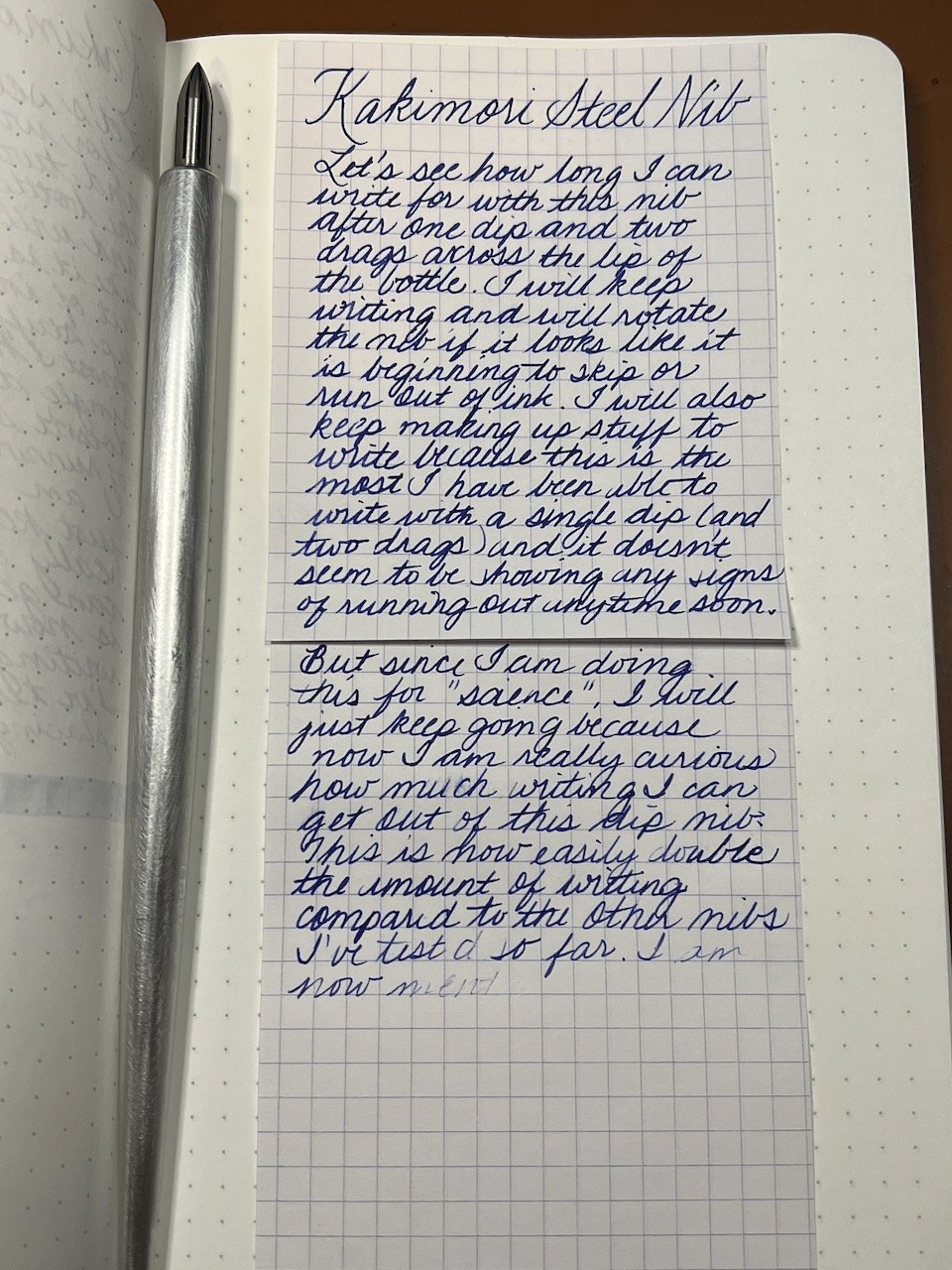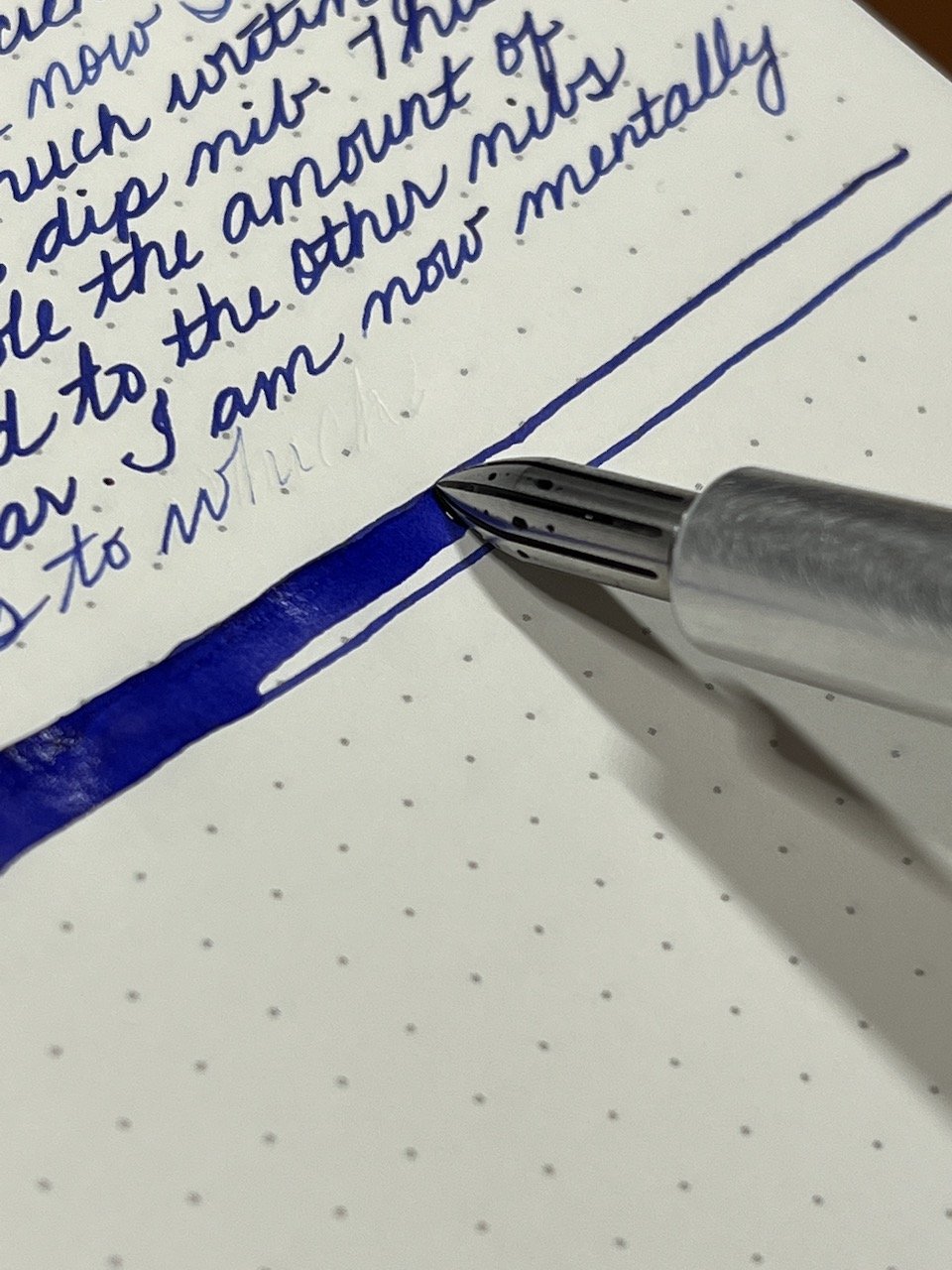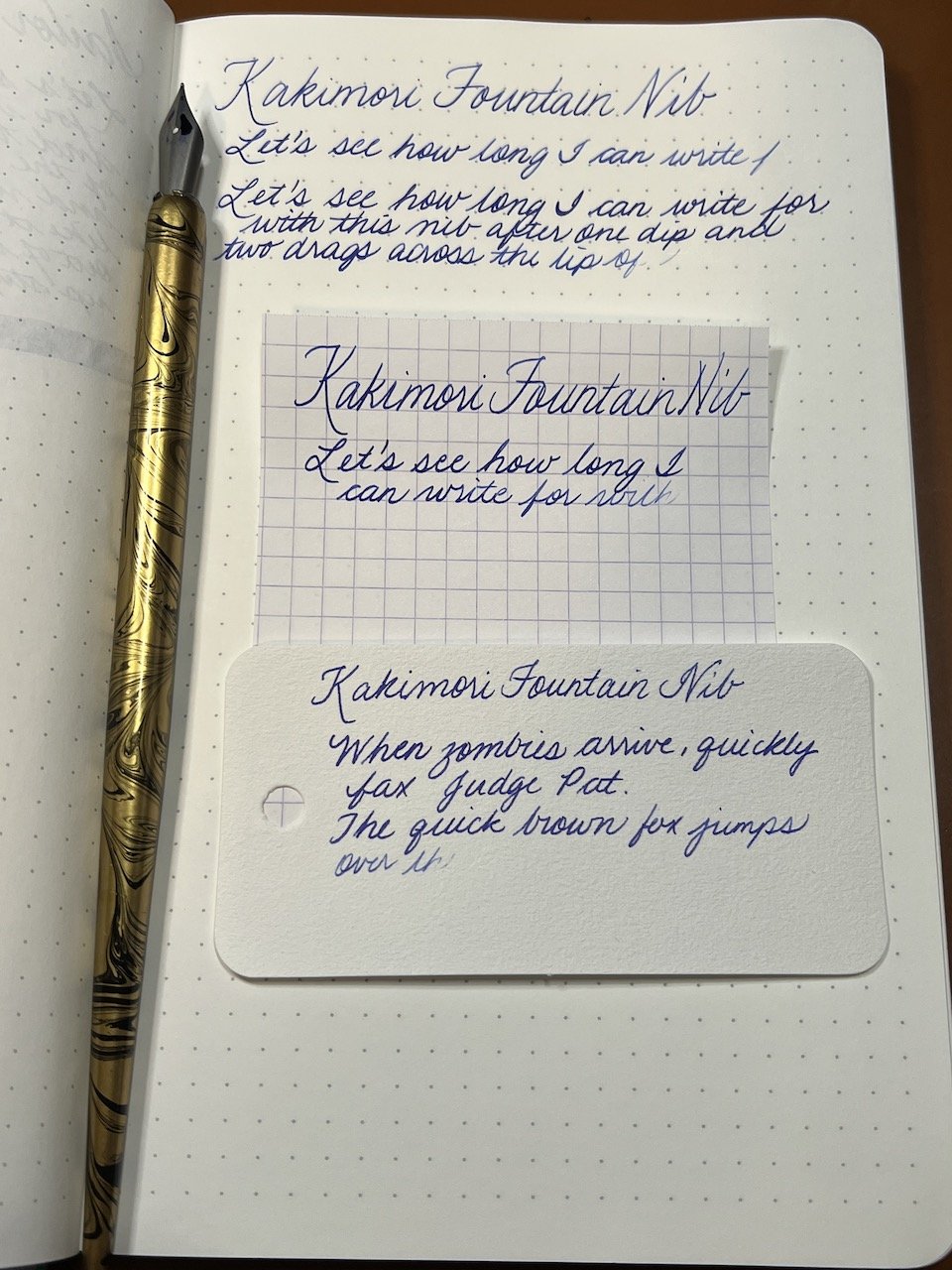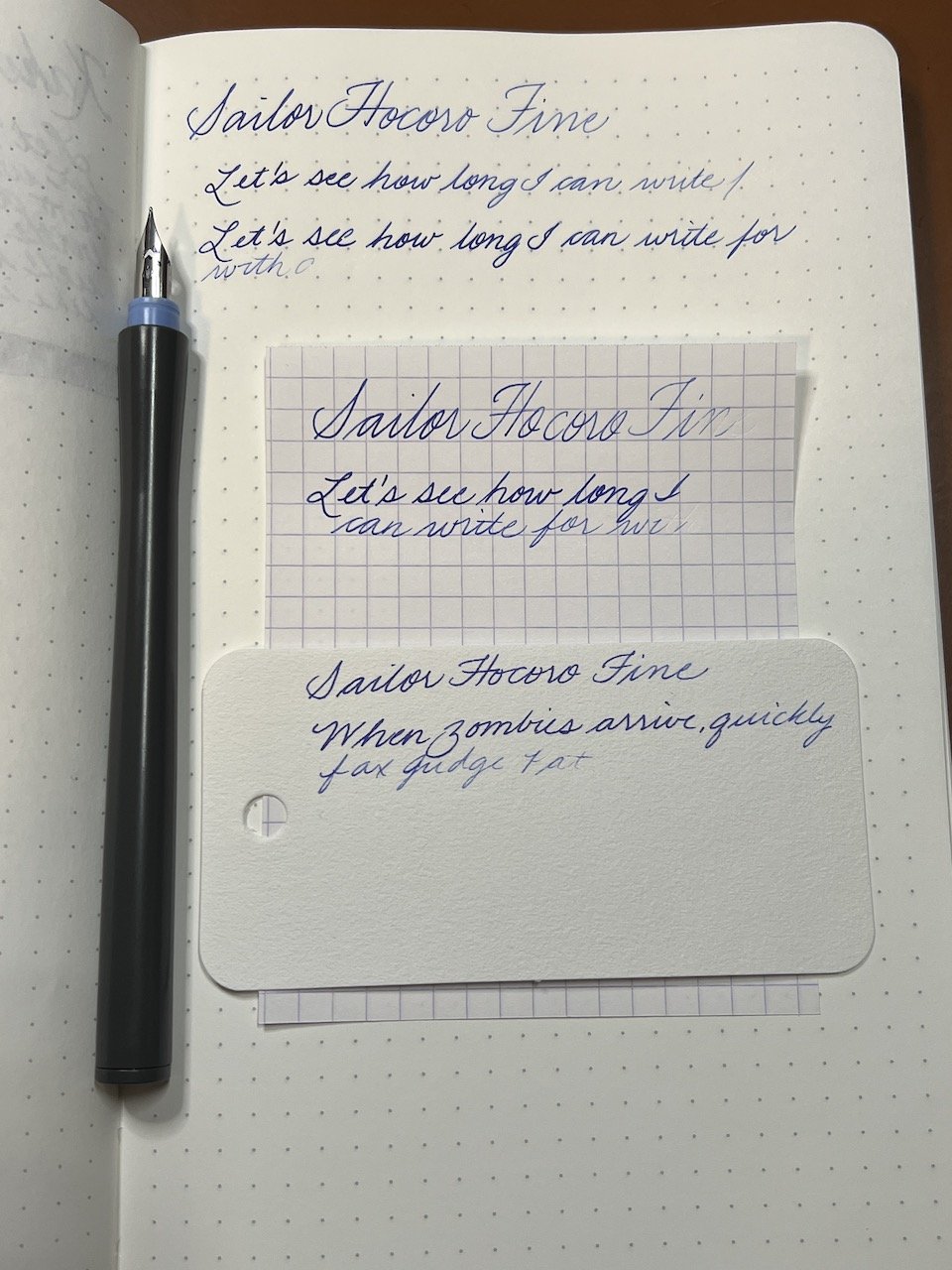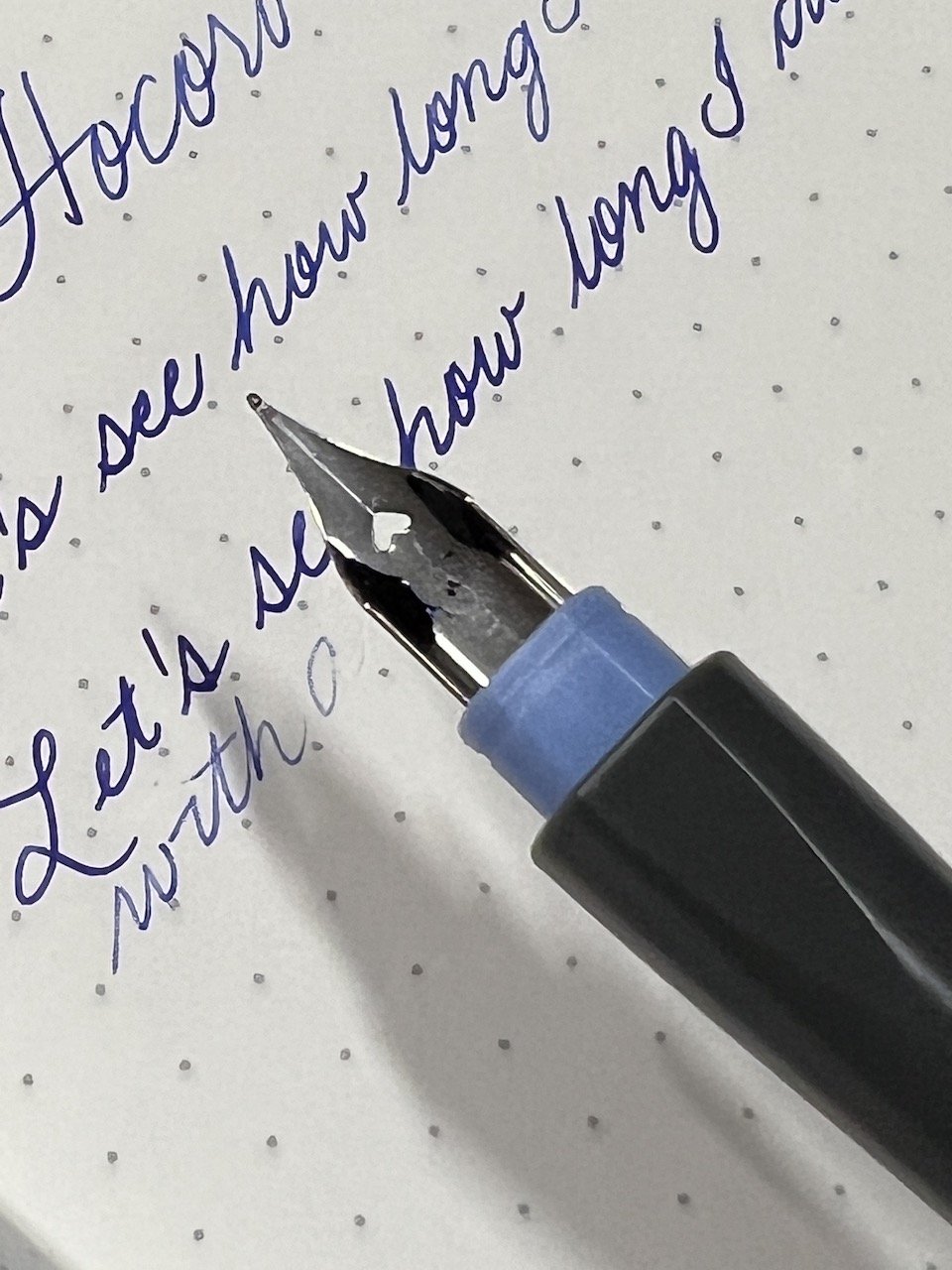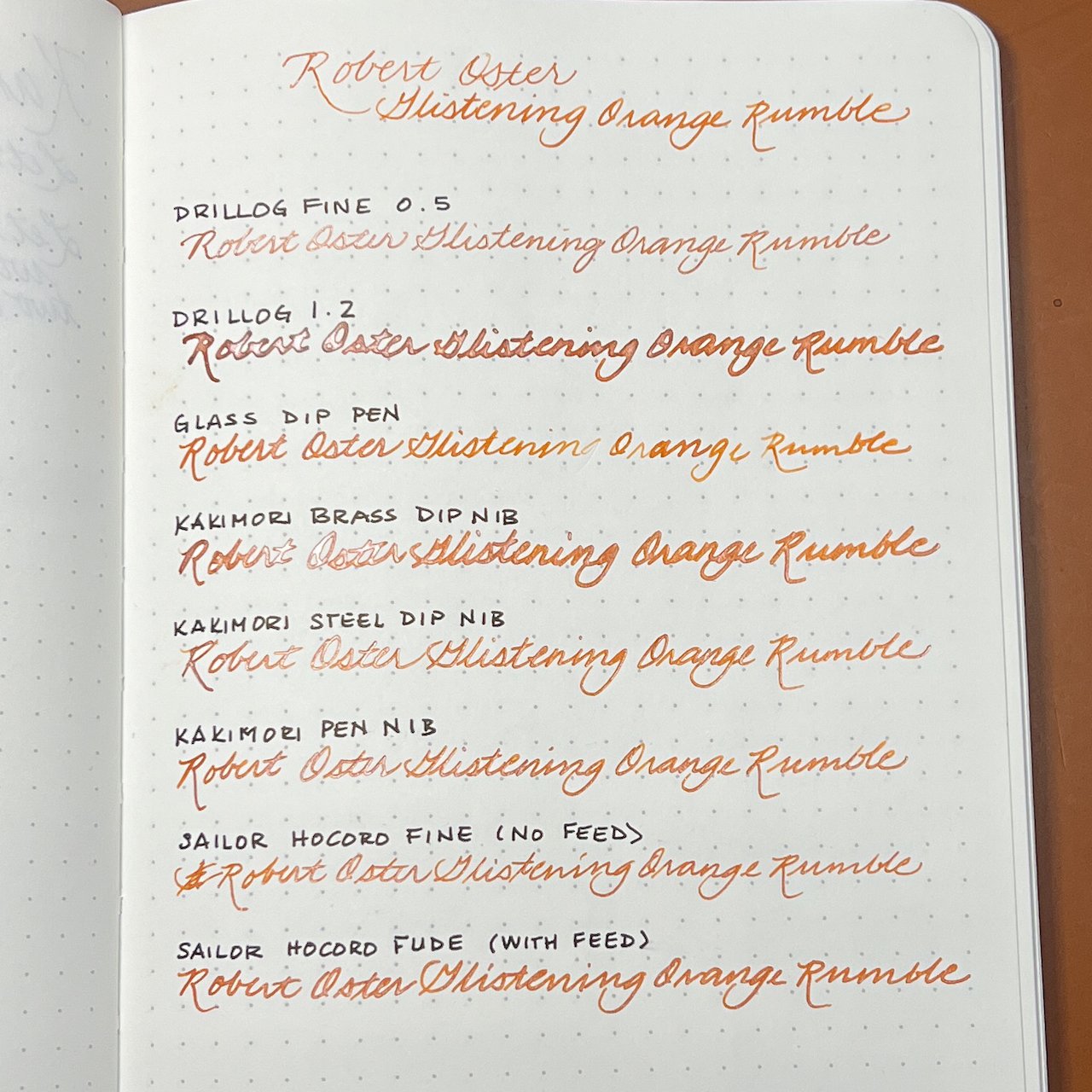(Sarah Read is an author, editor, yarn artist, and pen/paper/ink addict. You can find more about her at her website and on Twitter. And check out her latest book, Out of Water, now available where books are sold!)
Pen shows are a great place to try out the pens you have resisted buying for years, because it's so much easier to resist things online. And by "great" of course I mean dangerous, because it's so much harder to resist things in person. Especially when Brad says, "Hey, you were looking for one of these, right?"
In any case, I left the Chicago Pen Show with a Sailor 1911L 4am, and I'm very glad I did. As a habitual night owl who frequently greets the hour of 4am with pen in hand, that cool, blue glow of pre-dawn is like an old friend. The resin material of this pen matches that tone perfectly, and the gunmetal grey accents look elegant and moody. It's a gorgeous pen, and I coveted it when it was first released. I hesitated, though, because it was a limited edition and pricier than a standard Sailor, and I already have a number of lovely Sailors, and I didn't NEED it, and and and, etc. There was always an excuse. And then Sailor raised their prices, and even though this pen remained at the pre-rise price, I was feeling grumbly about the brand in general. So I kept resisting. Until Brad texted me at the Chicago Pen Show.
Brandon, of Rocky Top Pen Co., had a 4am at his table. It was used, but it also had a MF cursive italic nib grind by John Mottishaw, and he was selling it for $275--$37 under the retail price for a 1911L. While the pen is still available at many retailers in the smaller version for $220, that nib was calling to me. It's practically my favorite grind, and I don't own any other Mottishaw nibs. And that pen was right in front of me, then it was in my hand, then I put it down and walked away, and then I walked right back. Let's just call that the Pen Show Tango.
The pen has a 21k gold nib, and the CI grind on this MF nib is crisp and perfect. It shows just the right amount of character in the lines it creates, while still being both very fine and maintaining good flow. This nib is easily in my top three nibs that I own, maybe even the top one--though I'd need a Platinum showdown to confirm that. In any case, it's almost too good to write with, not because I'm afraid to use it, but because it's difficult to think about what I'm writing when I can't stop swooning over HOW I'm writing. That hasn't stopped me from using it every day since I bought it, though.
Perhaps this is more a review of the nib than the pen, as Sailor hardly needs my voice added to its chorus of praises, or maybe it's a review of the pen show experience, where you can find rare treasures and irresistible deals. But I wouldn't hesitate to recommend all three: The Sailor 4am, which you can still find in most online stores; Mottishaw nib grinds, which have utterly enchanted me; and attending pen shows, where resistance is futile.
This pen has seen two 4am writing sessions already. It will see several more in the coming weeks, as I'm in my heaviest deadline season. I'm very glad to have this aptly themed writing companion along for the ride.
Enjoy reading The Pen Addict? Then consider becoming a member to receive additional weekly content, giveaways, and discounts in The Pen Addict shop. Plus, you support me and the site directly, for which I am very grateful.
Membership starts at just $5/month, with a discounted annual option available. To find out more about membership click here and join us!













